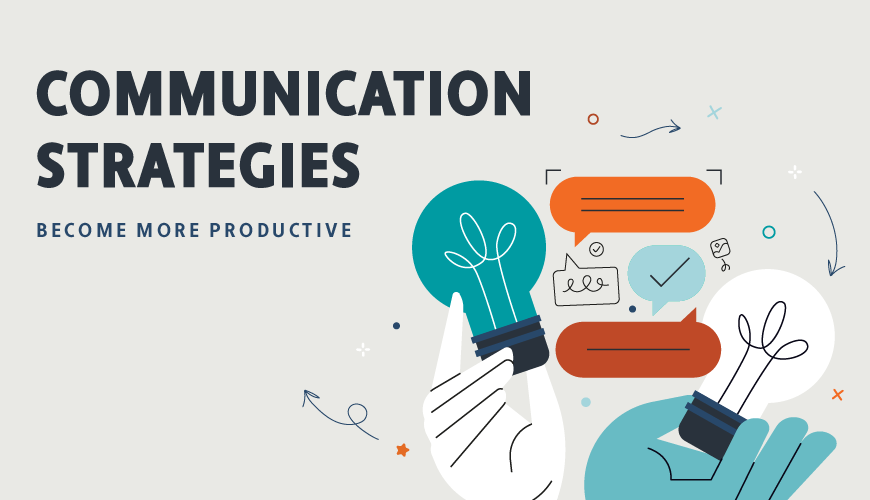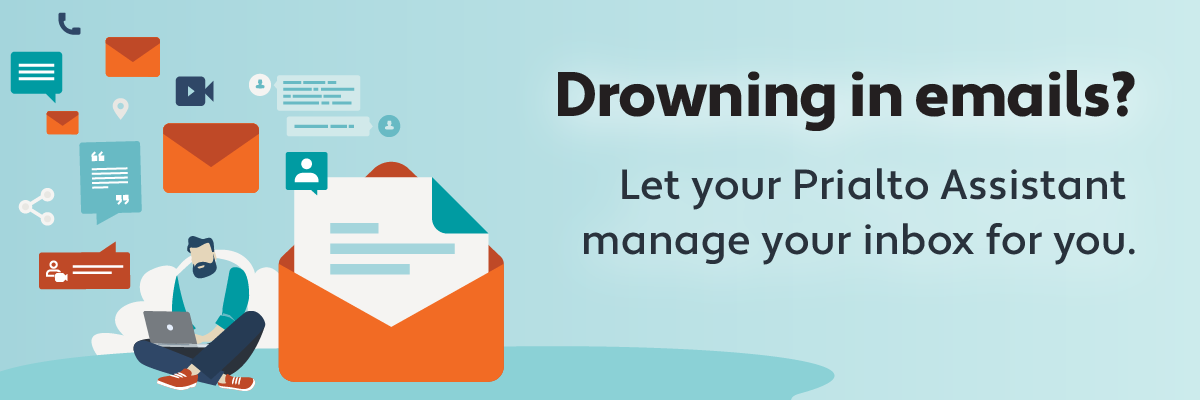Studies show that the average worker spends almost 4 hours per day communicating through email, instant messages, video conferences, and phone calls. However, not all of that communication is productive.
Though effective communication and collaboration are critical for brainstorming, problem-solving, and keeping people informed, most people's communication results in wasted and lost time. In fact, 31% of employees say that interruptions hinder them from focusing on their jobs.
That’s why effective collaboration and communication skills is so valuable. Rather than immediately responding to every message and meeting invite, there’s value to approaching professional communication strategically. That way, you can focus on the activities that drive your success.
In this article, we’ll walk through actionable communication strategies that will help improve organizational productivity by:
- Improving email communication efficiency
- Limiting distractions from chats
These productive communication tips will help you improve your workflows, the quality of your work, and your happiness in the workplace.
Let’s dive in!
Built a Culture of Communication
Productive communication starts with your company culture – as most things do. Employees can only communicate effectively when they’re in an environment where they feel respected and heard.
Effective communication and collaboration lead to a commitment to shared goals and, eventually, business success.
So how do you do it? You hire and train for shared values, including your company’s approach to verbal, written, and digital communications.
Here are some tips for improving your company’s culture of communication:
- Prioritize a culture fit in your hiring
- Model effective communication from the top down
- Seek regular feedback from your team, and listen to what they have to say
- Provide open forums where employees can ask questions and seek information
- Be open to change
- Prioritize clarity in your communications
Company culture is unique to each business, industry, and even team. Once you understand your culture, you have to identify how you want to communicate within that culture. Then, you have to create consistency.
Improve your Inbox: Make Email Communication More Efficient
Employees are busy, and they’re in their inbox. McKinsey research found that the typical professional spends a whopping 28% of their time reading and responding to emails. This huge loss of productivity is compounded by the fact that every time you stop a task to check your email, it takes an average of twenty-three minutes to refocus on the task you were working on fully.
Building email efficiency and consistency will go a long way towards improving productive communication on your team.
Here are some time-saving email communication strategies:
- Write clear, concise emails. Quick but poorly thought our responses can be more time consuming than putting together a single, carefully written email. Think your emails through to reduce miscommunications and improve efficiency.
- Use an inbox management system. If you set one up correctly, it will save you time and prevent important emails from slipping through the cracks. If you're not sure how to build one, our inbox management guide will help.
- Create email templates for common messages. If you send the same basic messages a couple of times each week, personalizing templates instead of starting from scratch will save you a lot of time.
- Schedule two to three times throughout the day to respond to emails. This will prevent emails from killing your focus and allow you to spend your day working strategically rather than reacting to messages.
One of the most effective communication strategies for boosting productivity is reducing the time you spend on email every day.
Learn more: Freeing Your Inbox with a Virtual Email Assistant
Clean Up Your Calendar: Keep Meetings Effective
Of course, communication isn’t just digital. It also encompasses the time you spend in meetings!
Studies show that employees spend an average of 31 hours per month in meetings, and 50% of that time is considered wasted. Over time, all these meetings can erode trust, decreasing productive communication and harming employee morale.
First, you have to prioritize managing your daily schedule, then you have to master the art of meeting communication.
Here are some tips:
- Master pre-meeting communications. Productive meetings require clear communication. Set an agenda and a goal for your meetings in advance, then communicate them to the attendees.
- Be prepared. Create efficient, predictable meeting structures to ensure your meetings are effective. If employees feel like their time is being wasted, you lose more than just 30 productive minutes.
- Follow up. Meetings should result in action. Send a follow up after the meeting is completed that summarizes what was discussed and provides next steps.
The goal is for every meeting to have value. And your communications around those meetings should be equally valuable.
Build a Feedback Loop
Productive communication isn’t always fun, but when done right, it is effective. One extraordinarily easy way to improve communication is to seek and provide feedback consistently. Celebrate positive feedback and respond thoughtfully to negative feedback.
Here are a couple of ways to integrate feedback into your communication strategy:
- Provide regular opportunities for employees to provide feedback in person and anonymously—a regular meeting, an inbox, a Dropbox, etc. You can also build an anonymous feedback environment by creating a QR code for free and embedding it with the feedback form.
- Provide positive feedback publicly and negative feedback privately
- Focus on constructive communication, only provide feedback when it’s helpful
Feedback not only improves how the company runs, it also helps you (and your employees!) improve skills and job satisfaction.
Leverage the Right Tools and Technology
There are many channels for teams to communicate, including email, video, chat, texting, etc.
Sometimes there are too many channels available.
The rise of technology has given us a host of communication avenues. However, each tool adds complexity and opportunities for miscommunication.
For example, have you ever wondered, “Where did we talk about that? Email? Slack? Did they text me?”
Instead of increasing productivity, you’re about to spend 10 minutes jumping between channels to find the details you’re looking for. That’s why it’s important to leverage the right communication tools for the right use case.
Here are some tips:
- Set response time expectations across channels. For example, 24-hour response time for email, 20 minutes for chat, and phone or video calls for emergencies.
- Stick to your use case. Identify and communicate when each channel should be used. Chats are for quick solutions, but bigger projects should be discussed in a public channel or over email, where there’s visibility and a paper trail.
- Reduce your tech stack. Too many channels is too confusing. Focus on the channels that are most effective and deploy them across the whole company.
Learn more: Fixing Prialto’s Bloated Subscription Tech Stack

